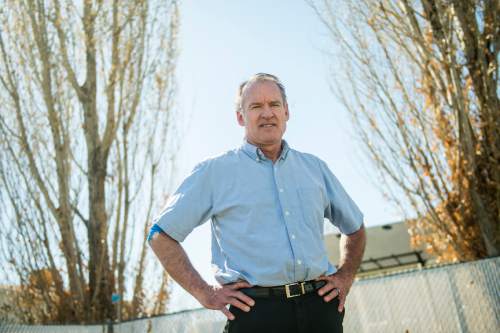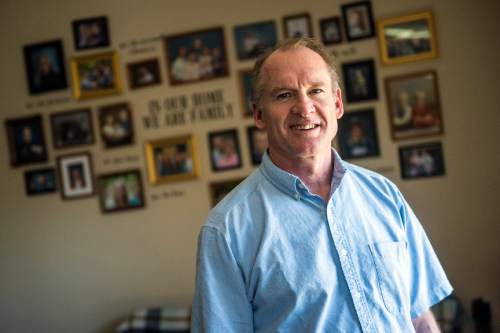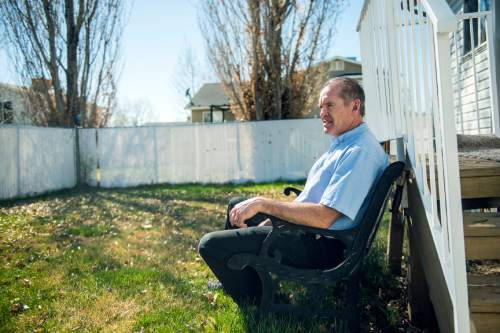This is an archived article that was published on sltrib.com in 2015, and information in the article may be outdated. It is provided only for personal research purposes and may not be reprinted.
With one of the nation's lowest unemployment rates, Utah's economy has taken off, and politicians, led by Gov. Gary Herbert, regularly crow about the state's economic exceptionalism.
But amid all of the good news, Utah has seen the overall percentage of people willing to work stagnate and the rate of women in the labor force decline.
"We have been quite perplexed with that," said Carrie Mayne, chief economist for the Utah Department of Workforce Services. "It doesn't jibe with the job growth we are seeing."
If you have a job or are looking for work, then you count in what the government calls the labor-force-participation rate. For more than a decade, Utah's rate held at a robust 72 percent.
That was before the real-estate bubble burst in late 2007, resulting in the Great Recession.
At the beginning of 2015, Utah's rate is 68.1 percent and it hasn't changed much in the past two years. It would take 82,000 people suddenly joining the job hunt for Utah to match its pre-recession norm. That gap is likely to take years to close.
"A lot of people left the labor force and have not returned," Mayne said. "It is very similar to the national story, but the one big difference in Utah is that we can't explain it away with the baby-boomer story."
Nationally, the participation rate has steadily slipped to 62.9 percent, a slide coinciding with baby boomers beginning to retire. Economists at the Federal Reserve and the White House say that demographic shift is a big part of this trend. No matter how hot the economy gets, most retirees will stay retired.
Utah is the youngest state in the union with a population that continues to expand, and it has plenty of younger workers to replace most retirees, according to Pam Perlich, a demographer with the University of Utah. But, even in Utah, the median age has crept up to 30, and it's likely that at least a part of the participation-rate decline is due to an increasing number of retirees.
—
Low-wage jobs • Robert Spendlove, an economist with Zions Bank, believes the explanation to Utah's labor-force quandary comes down to the quality of jobs available.
"People are employed," he said, "but the kind of employment that's growing is not the kind that produces higher wages or induces people to want to enter the labor market."
Spendlove points to his brother-in-law, Stan Miller, who spent 18 years working as a land surveyor before the economic collapse. Outside of a few state road projects, Meridian Engineering in West Jordan saw its contracts evaporate. A supervisor called Miller into the office in 2009 and let him and another colleague go. He was stunned. It was the first time in Miller's adult life that he was without work.
Miller sent résumés to engineering firms throughout the Wasatch Front. He caught a job here or there, but eventually those companies let him go as well. Miller has been laid off six times since the recession hit. The Millers lost their house and a car because they couldn't make the payments. It was all emotionally crushing.
"I didn't want to fail my family," said the father of five adult children. "I love them too much."
With his wife, Leslie, urging him on, Miller, 50, keeps applying for jobs. In the meantime, he is delivering pizzas at night, making less than half what he made as a land surveyor.
As of late, he's seen more friends employed and heard of fewer layoffs. Asked if he's optimistic that he'll land a surveyor job soon, he said: "Some days. … I try to be positive."
"I worked hard in my prime. Don't own any toys, never have. Don't have any retirement. Owed money on a car I gave back to the bank last summer," he said. "This is not where I wanted or thought I would be at 50."
Spendlove deals almost exclusively with numbers, but Miller has given him a glimpse of how a statistic plays out in real life. He understands how someone who doesn't have an advanced degree can struggle when the economy tanks and eventually gives up.
"If the choice is between not working and working in a low-paying or low-skilled industry, a lot of people are deciding to continue to stay home," he said. "If wages were higher and there were jobs better fitted to their skill set, they would re-enter the workforce."
The jobs report for February showed fairly widespread growth over the past year, with gains in transportation, retail, construction, government and business services. The one exception was in natural-resource extraction. That's because oil prices dropped.
Utah's unemployment rate is 3.4 percent, and in the past year the state added 55,100 jobs. Mayne and Spendlove expect Utah to have another good year in 2015.
With more growth in areas such as construction, where jobs generally don't depend on college degrees, Spendlove expects the labor-force-participation rate to rise.
Most of those construction jobs go to men, but the real workforce shift appears to involve women.
—
Women (not) at work • In 2007, 81.3 percent of men were participating in the labor force in Utah. That dropped to 76 percent in 2011 and partially rebounded to 78.9 percent in 2014.
For women, the rate went from 63.2 percent in 2007 to 58.1 percent in 2011 and, in 2014, dropped even further, to 56.9 percent. Mayne has been wondering what is going on.
"The first thing is to not assume [women] are 'struggling' to get back to the labor force. Perhaps they are choosing to stay out," she said. "But either way, it is perplexing to see their rates not recover as quickly."
Spendlove says Mayne might be right. He believes more women may have felt the need to work to help their families during the recession, but as the economy has stabilized with lower-paying jobs, some have decided it is more advantageous to stay at home with children.
"With high fixed costs, such as child care and transportation, wages and job opportunities have to be higher than they are to induce more women to remain in the workforce," he said. "Our economic recovery is bringing back more men than women."
That may explain why fewer women in their prime working years are in the labor force. The biggest statistical decline, though, is in the 16-to-19 age group, which went from a 58.7 percent participation rate in 2007 to 47.1 percent in 2014. One potential reason for that phenomenon is religious, not economic.
The Church of Jesus Christ of Latter-day Saints reduced the minimum missionary age for women from 21 to 19 and for men from 19 to 18 in late 2012. Since that announcement, the LDS missionary force has exploded, especially among women, from 58,000 to about 85,000 — a 47 percent jump.
One working theory, then, about Utah's labor force is that young Mormons who would have found a job right out of high school, have decided to hold off until they return from their missions. While this effect appears to be stronger for women, young men have seen a smaller 5 percentage-point drop in their labor-force participation.
"That won't fully rebound," Perlich said, "even if the labor market improves because of the change in the missionary age."
With the missionary shift, a slowly aging population, a persistent economic hangover from the Great Recession and a trend toward a more high-tech job market that requires higher levels of education, it's not clear that Utah will ever reach the labor-force rates of 2007.
mcanham@sltrib.com Twitter: @mattcanham









